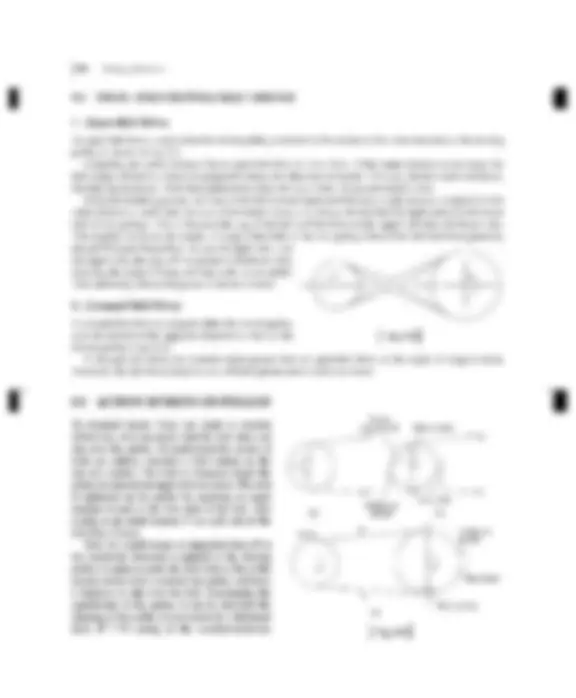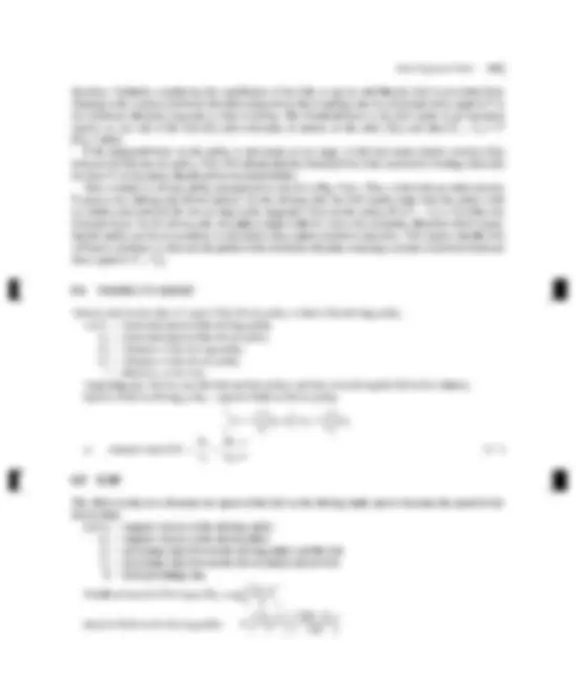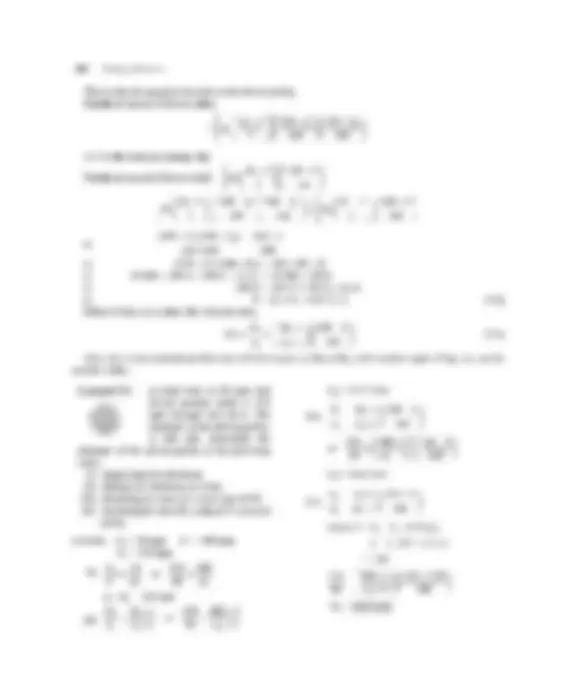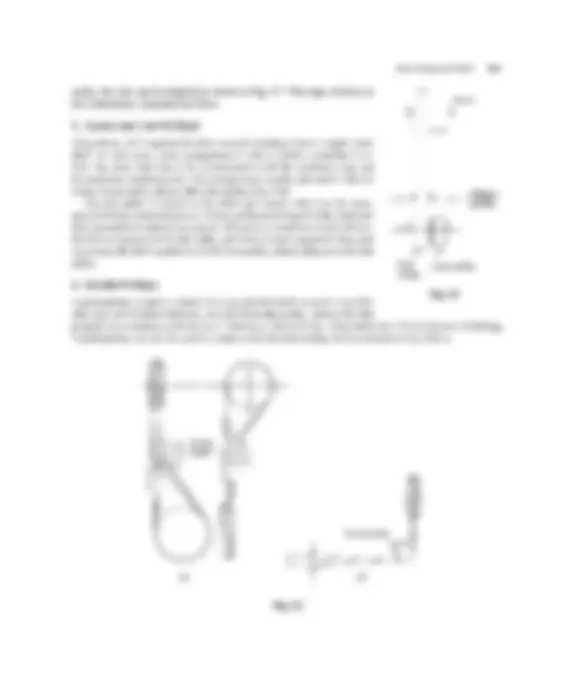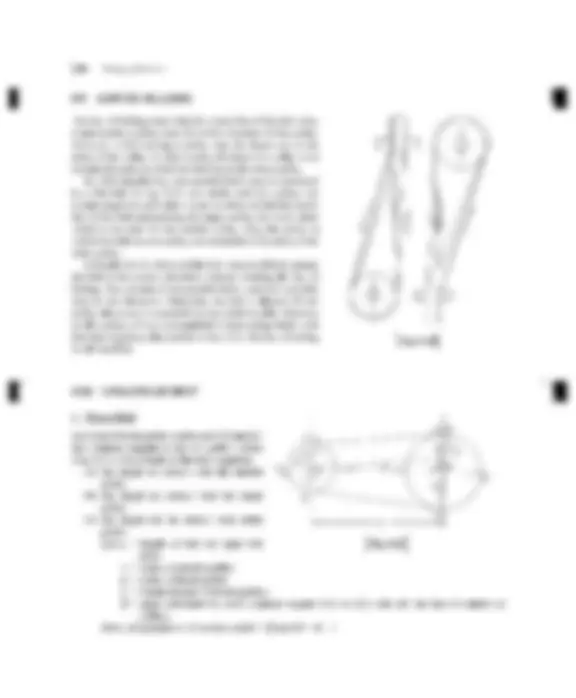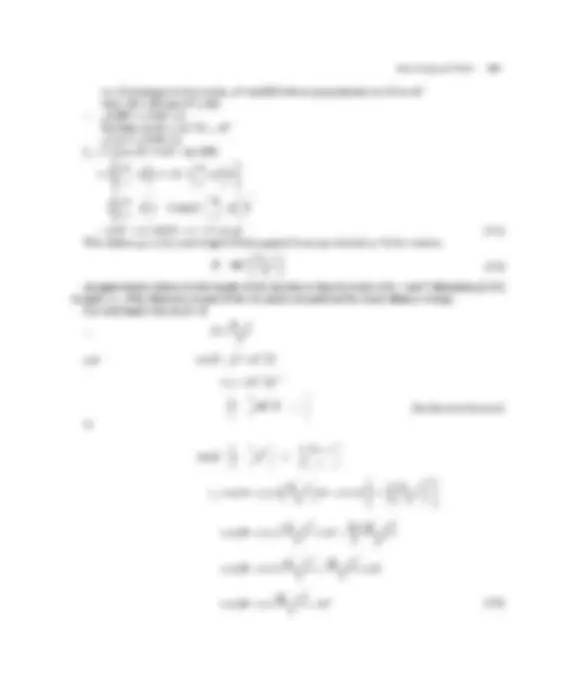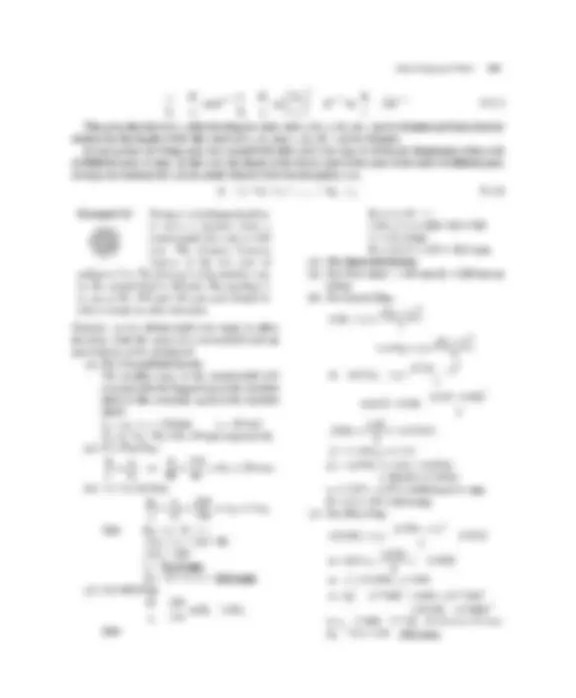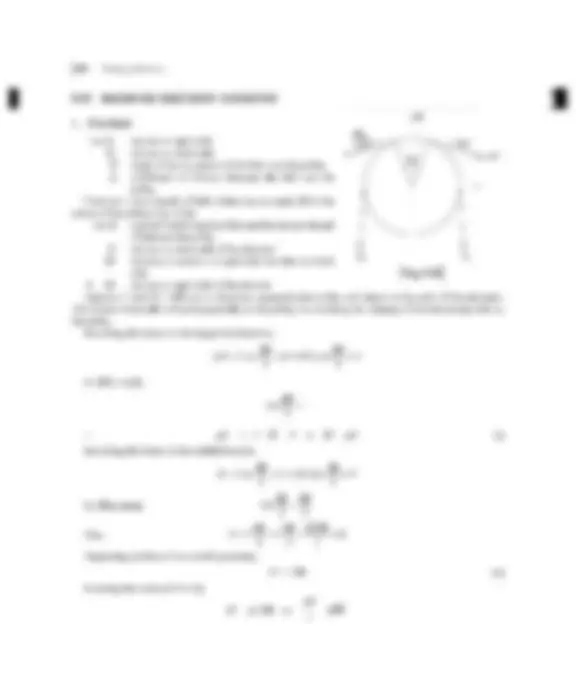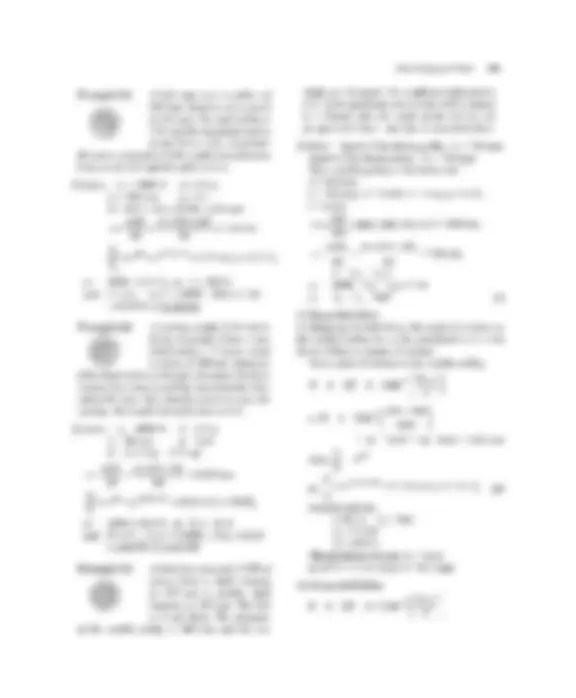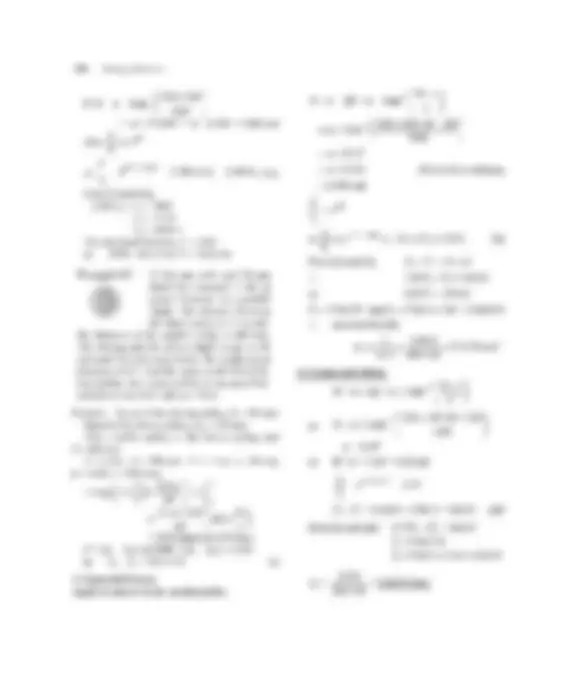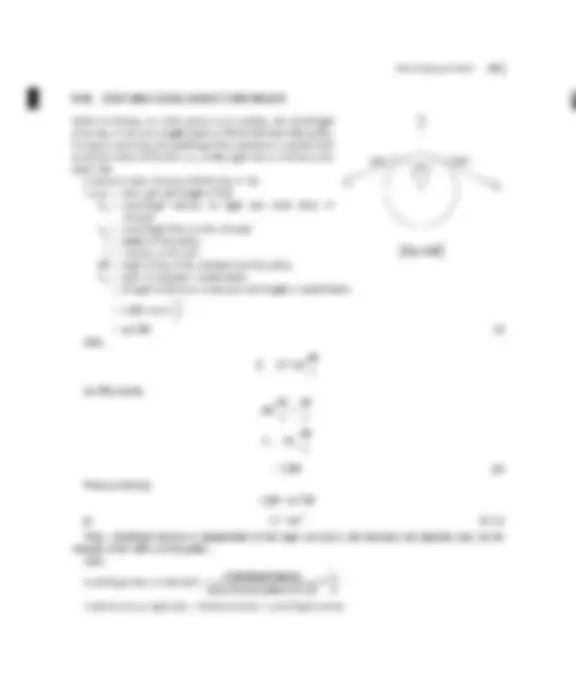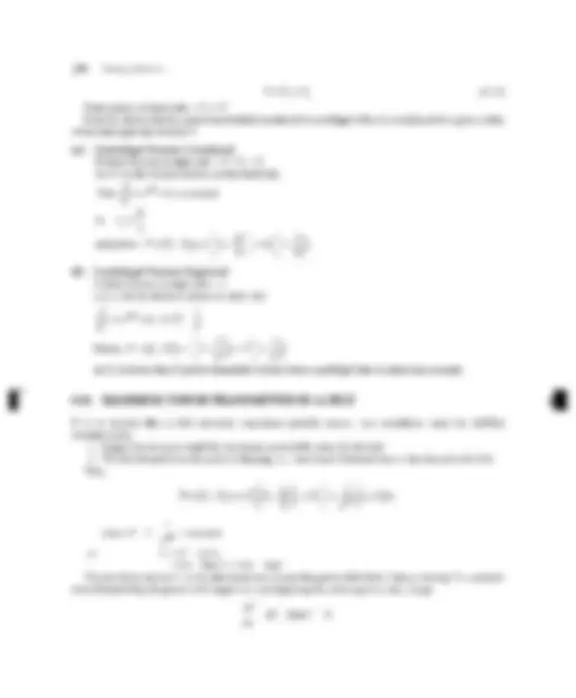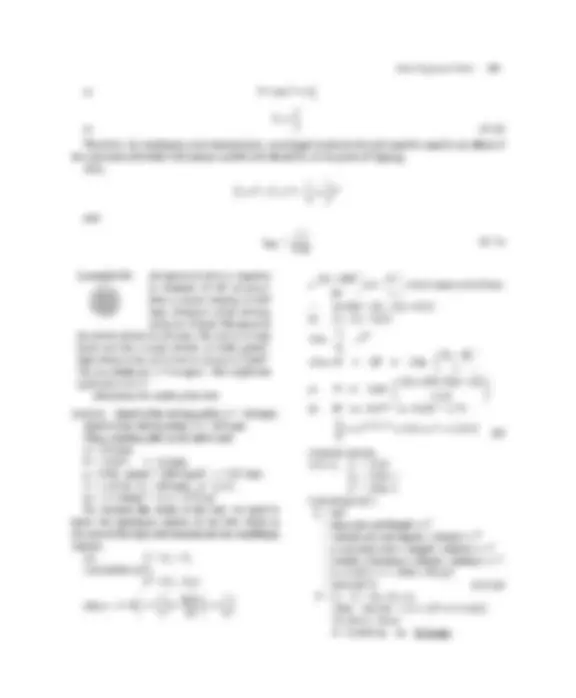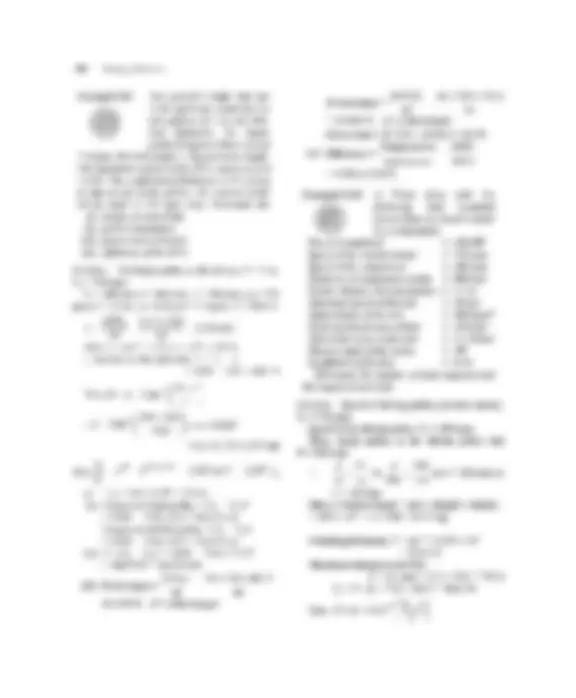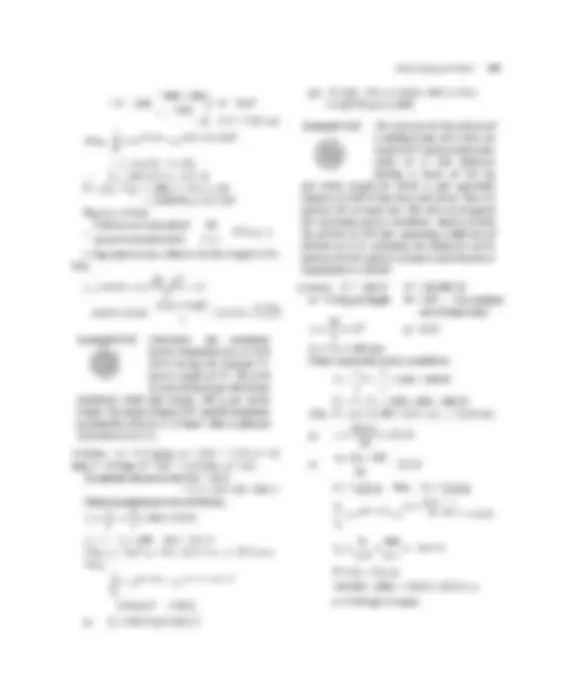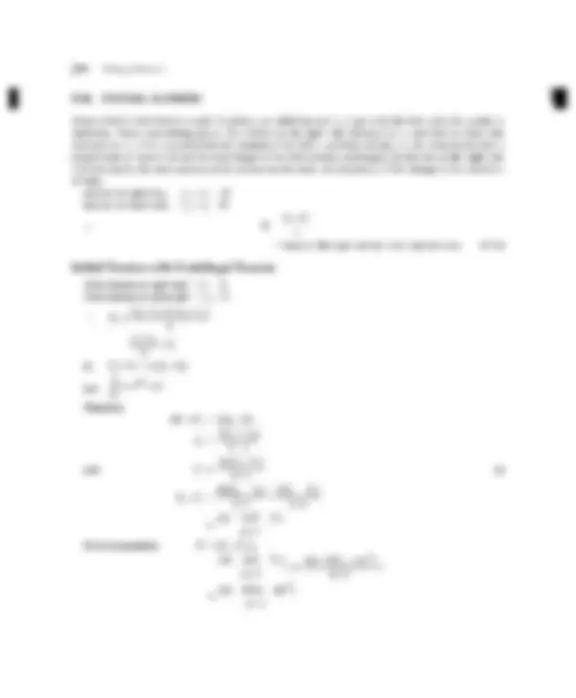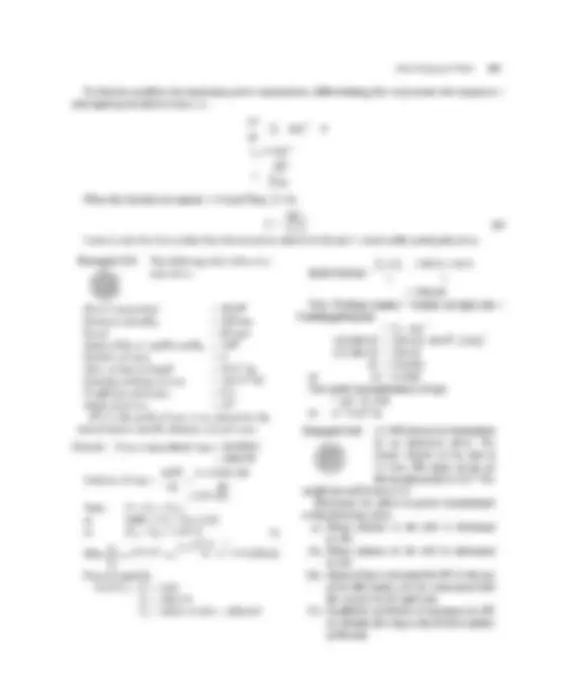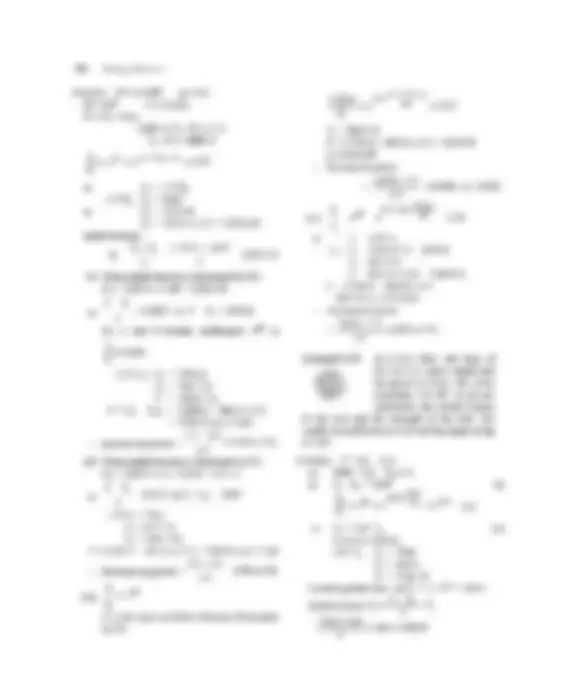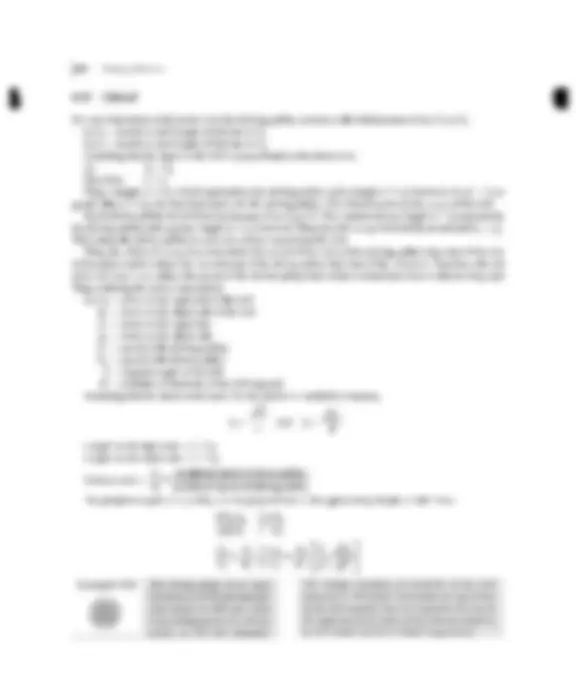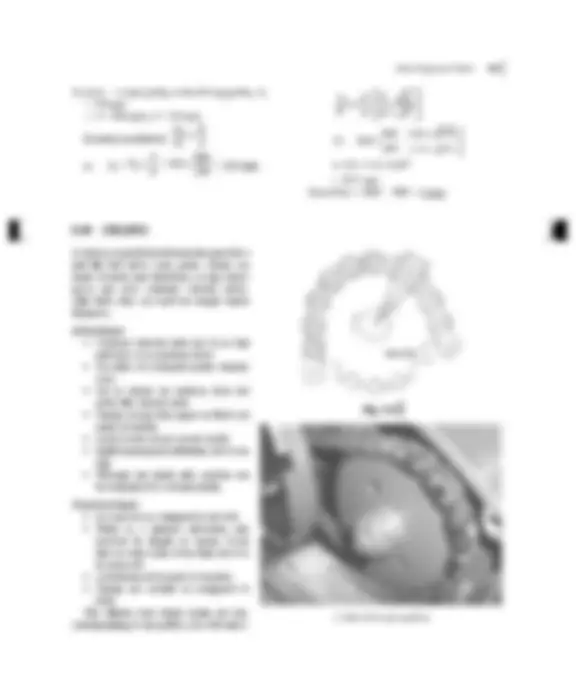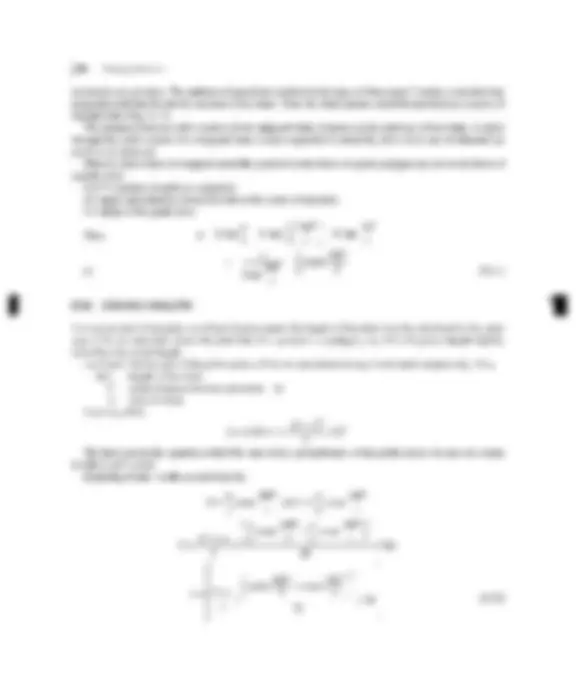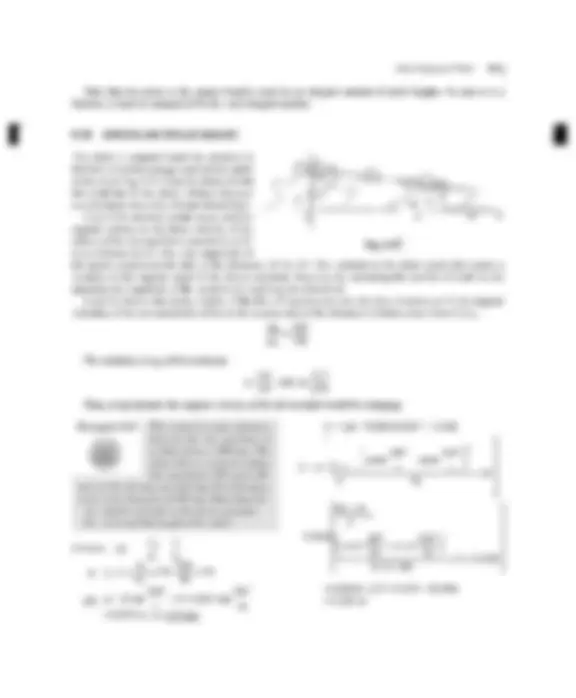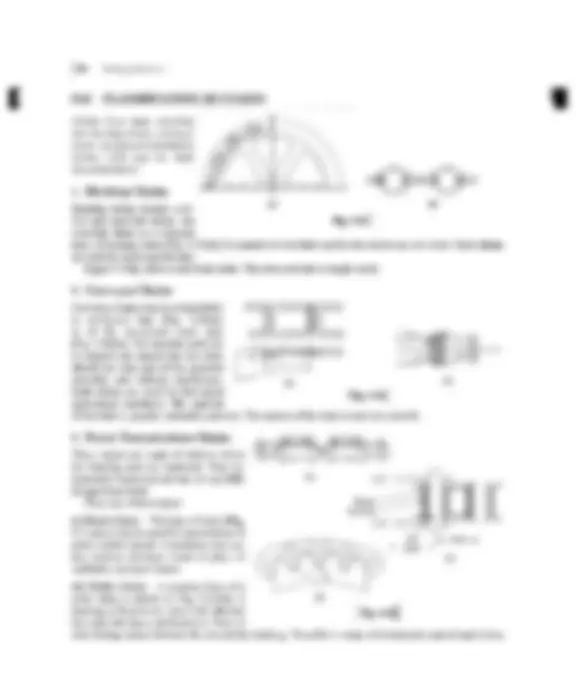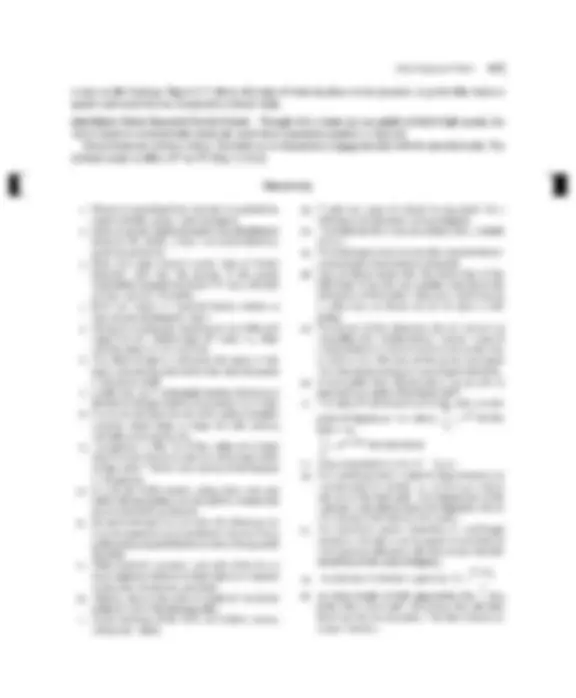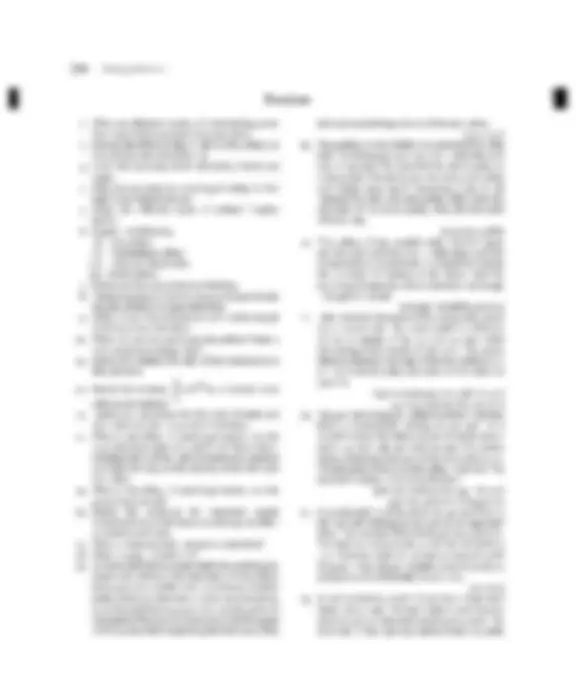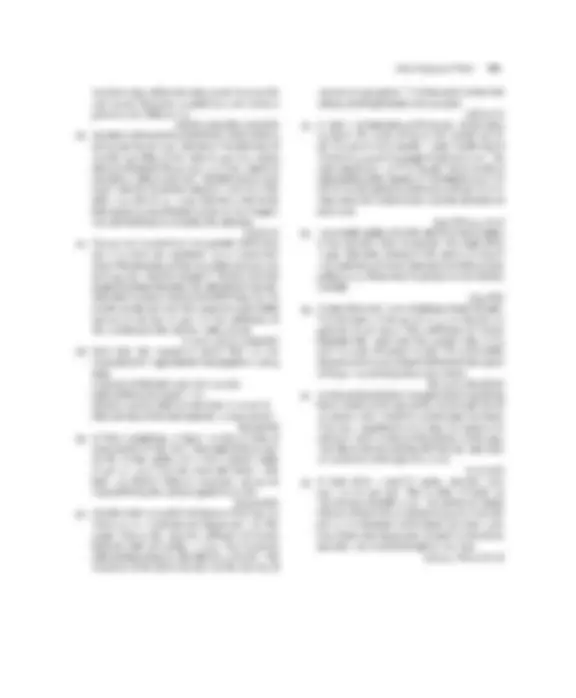Partial preview of the text
Download Belts, Ropes and Chains and more Study notes Mechanical Engineering in PDF only on Docsity!
BELTS, ROPES AND CHAINS E Introduction Usually, power is transmitted from one shaft to another by means of belts, ropes, chains and gears, the salient features of which are as follows: 2. Belts, ropes and chains are used where the distance between the shafts is large. For small distances, gears are preferred. . Belts, ropes and chains are flexible type of connectors, i.e., they are bent easily. 3. The flexibility of belts and ropes is due to the property of their materials whereas chains have a number of small rigid elements having relative motion between the two elements. 4. Belts and ropes transmit power dus to friction between them and the pulleys. If the power transmitted exceeds the force of friction, the belt or rope slips over the pulley. 5. Belts and ropes are strained during motion as tensions are developed in them. 6. Owing to slipping and straining action, belts and ropes are not positive type of drives, i.e., their velocity ratios are not constant. On the other hand, chains and gears have constant velocity ratios. This chapter deals with the power transmission by belts, ropes and chains. Power transmission by gears will be dealt in the next chapter. The belts used may be flat or of V shape. The selection of belt drive depends on the speeds of the velocity ratio, power to be transmitted, space available and the service conditions. A flat belt is used for light and moderate power transmission whereas for moderate to huge power transmission, more than one V belt or rope on pulleys with a number of grooves is used. Eg 9.1 BELT AND ROPE DRIVES To transmit power from one shaft to another, pulleys are mounted on the two shafts. The pulleys are then connected by an endless belt or rope passing over the pulleys. The connecting belt or rope is kept in tension so that motion of one pulley is transferred to the other without slip. The speed of the driven shaft can be varied by varying the diameters of the two pulleys. For an unstreched belt mounted on the pulleys, the outer and the inner faces become engaged Effective in tension and compression respectively (Fig. radius Neutral 9.1). In between there is a neutral section which section has no tension or compression. Usually, this is considered at half the thickness of the belt. The | Fis. 91 j Thickness Driving pulley 
